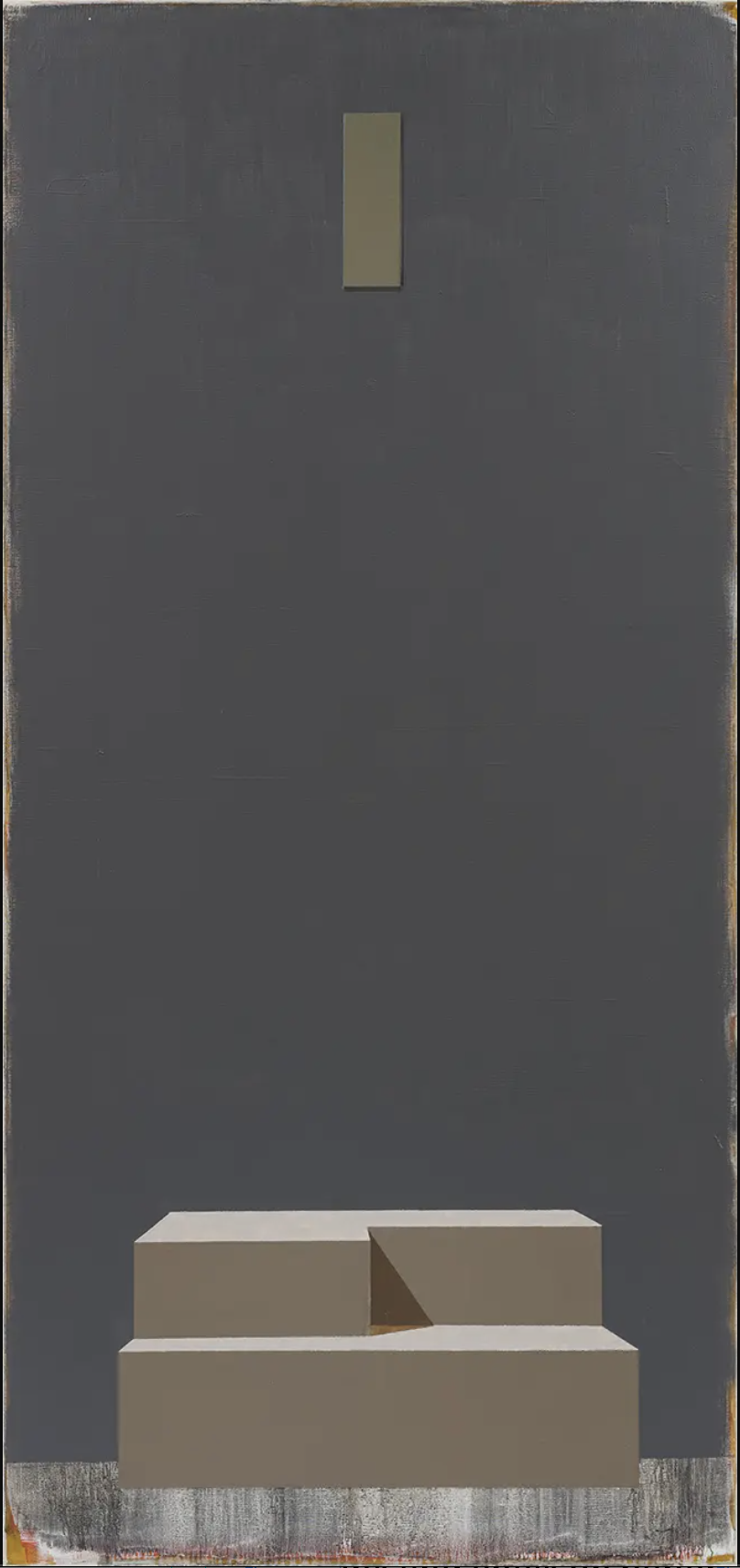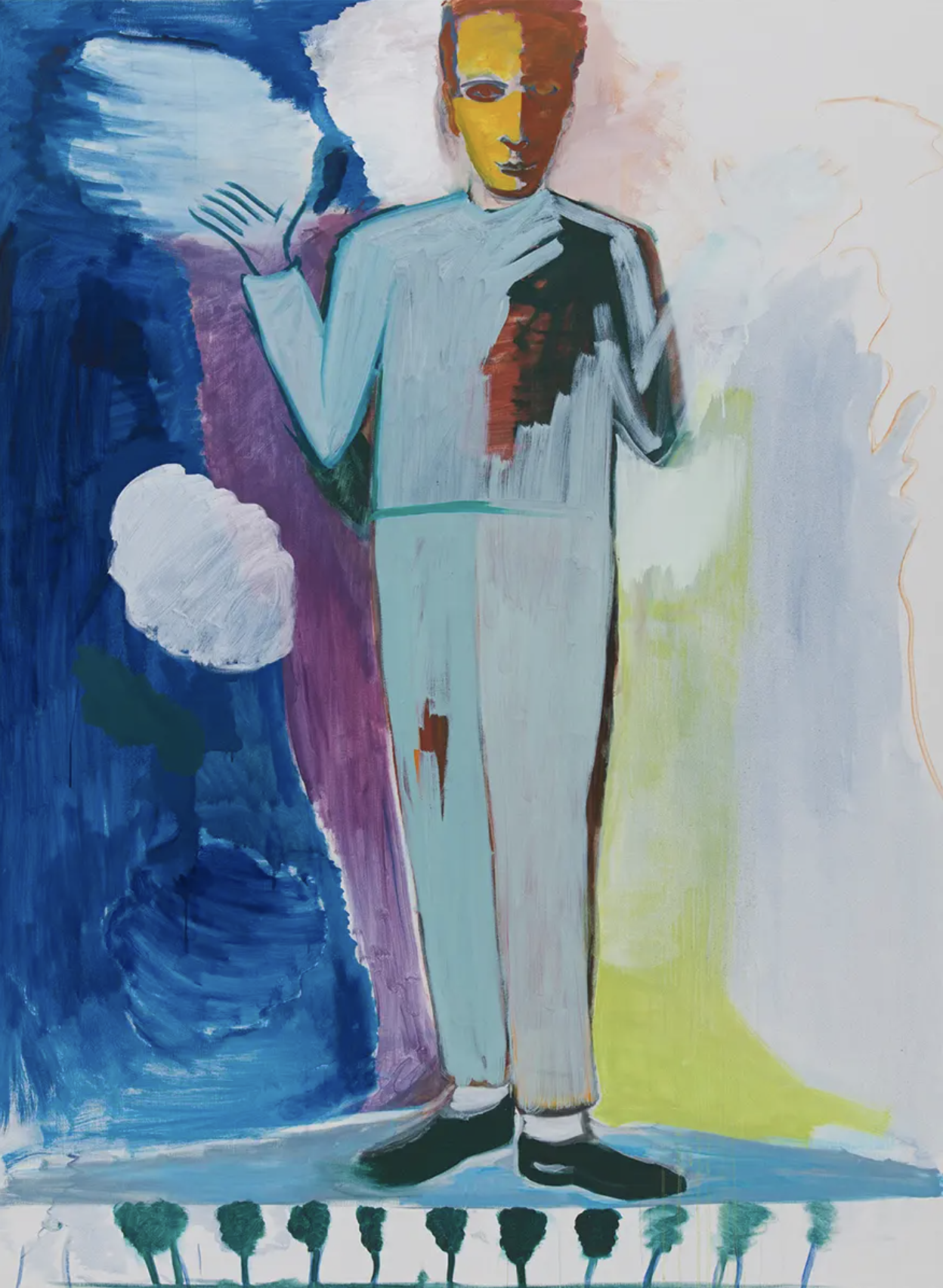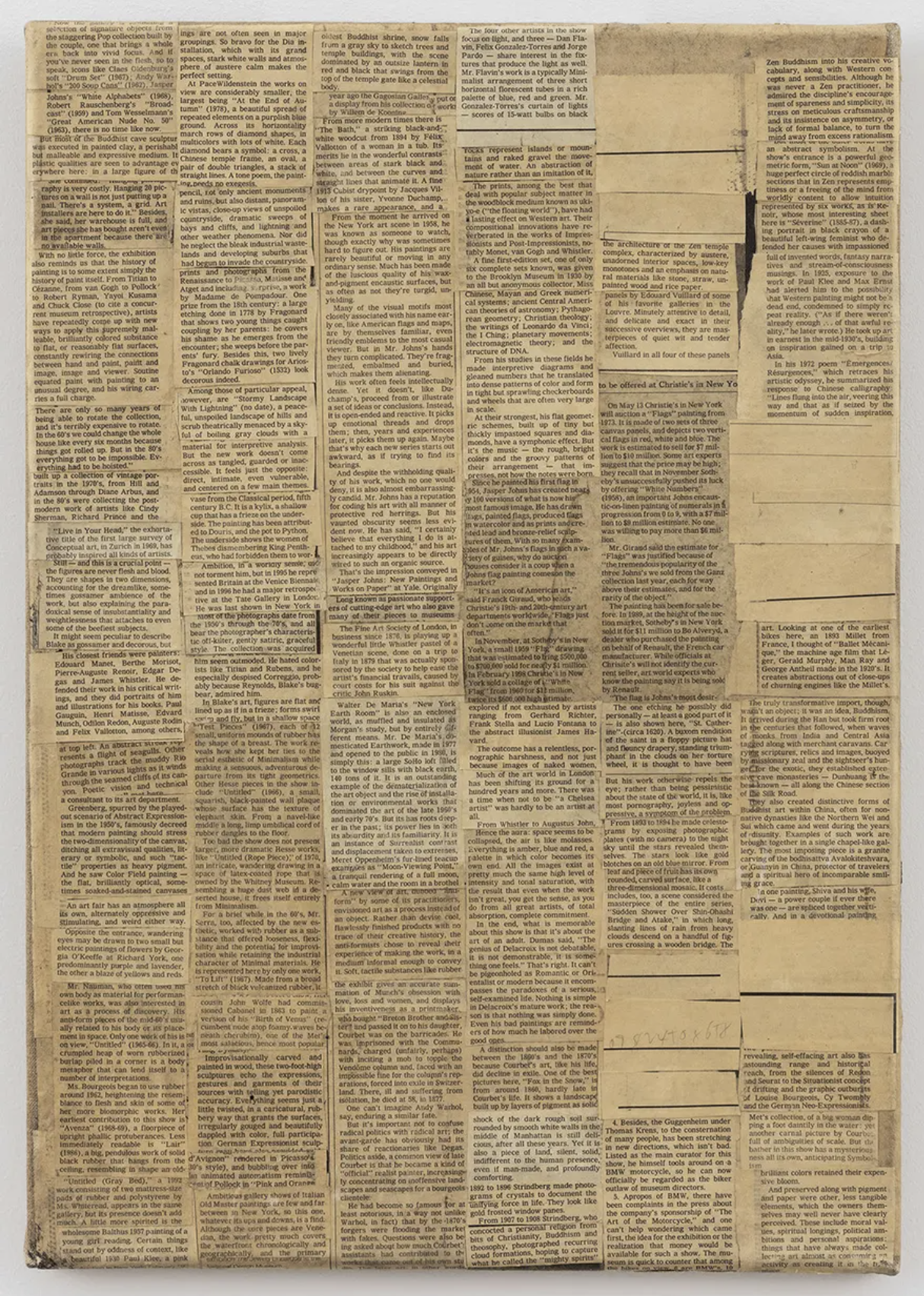Le Corbusier and Pierre Jeanneret for Chandigarh:
An exhibition of historic furniture
From the private collection of Rajan Bijlani
7 September – 19 October 2024
A globally significant and extremely rare collection of furniture designed by architects, Pierre Jeanneret and Le Corbusier, for the Northern Indian city of Chandigarh in the early 1950s, is on view for the first time publicly at Blue Mountain School.
Modernist design, alongside a distinct local aesthetic—comprising materials plentiful in the Punjab at the time, including teak, bamboo, wicker and rope—distinguish the furniture on display, which was originally intended for use in the various public spaces of the capital of Chandigarh—a city designed in its entirety by Le Corbusier, following India’s independence from the British Empire in 1947. Collaborating with his cousin, Pierre Jeanneret, the furniture was designed to reflect the buildings themselves, and thus became synonymous with the city. A combination of rigorous use in public spaces, and progressive modernist principles meant that much of this furniture—considered modern masterpieces today—was discarded. Those that have survived are considered highly collectable.
British-Indian collector, dealer and developer, Rajan Bijlani, amassed an impressive private collection between the years of 2004 and 2007. Acquired primarily to ensure the preservation of a unique design legacy, the entire collection was sourced from the original Chandigarh site, and from nearby private homes and institutions.
The collection comprises pieces including the High Court Sofa Set, an early and coveted set designed for the High Court, with a timber frame and round dowel; the Square Library Table, one of only twenty made for the Punjab University; and a set of two Committee Chairs—rarely seen with a wooden arm, the chairs were sourced from the Secreteriat in the Capital Complex.
Although Le Corbusier’s and Jeanneret’s Chandigarh works have never been formally certified, Christie’s Michael Jefferson, a noted expert on twentieth-century design, accompanied Bijlani to India to verify provenance.
I’ve always admired what James and Christie have built at Blue Mountain School, continually at the forefront of design, fashion and art. Since its creation in 2018, Blue Mountain School has been a constant source of inspiration and it is an honour to exhibit my collection there. The atmosphere of the space is well aligned to the ethereal nature of Jeanneret, allowing for the collection to complement the spirit of the gallery.
—Rajan Bijlani, Collector, Dealer and Developer
Rajan Bijlani discovered his love for collecting twenty years ago after an adventure in Chandigarh, the first planned city in India and the capital of the Punjab. In 1951, personally invited by India’s first Prime Minister Jawarhal Nehru, the famed Swiss–French architect Le Corbusier (1887 – 1965) and his cousin Pierre Jeanneret (1896 – 1967) conceived a master plan for a modern capital that signified both the ambitions and hope of a newly independent India.
Rajan Bijlani was born in London of North Indian descent; his family is originally from Sindh, a state adjacent to the Punjab. Although his studies focused on economics and the sciences, he has nurtured a strong aesthetic awareness since early childhood, and honed his design skills through his role as a property developer—enjoying each entry into a new space and visualising its transformation.
Also on view
Artworks by Rene Daniëls, Michael Simpson and Sarah Rapson
Curated by Stuart Shave of Modern Art
Michael Simpson
Painting almost daily for over six decades, Michael Simpson is renowned for his large-scale paintings that repeatedly work through a limited number of motifs. Influenced by fifteenth century Venetian and early Flemish painting, Simpson’s visual vocabulary returns again and again to a belief in “the infamy of religious history”, in his words. These motifs that potently address faith, existentialism and authority – benches, steps and ladders, pulpits, Islamic minbars, and confessional boxes – are the foundational forms of his precise pared down compositions. These structures are rendered with a forensic level of detail, but in such a way that they also become pure forms: benches levitate on an empty plane; ladders lead to nowhere.
Simpson’s paintings are characterised by his potent economy and austerity, as well as a marked depth in spatial perspective; their subjects painted on a flat painted surface. But despite their austerity and simplicity, each of Simpson’s paintings contains an elaborate consideration of a specific history. In his Leper Squint series, for example, what might first appear to be a recurring reference to the black square of Kazimir Malevich, is in fact a poignant depiction of a hagioscope, or a ‘squint’; a small hole positioned in the exterior walls of medieval churches for the purpose of allowing lepers to see and hear the sacraments without contaminating the congregation. In another example, Simpson’s ongoing bench paintings, which he started painting in 1989, are an homage to the Italian Renaissance philosopher Giordano Bruno, who was burnt alive in 1600 for heresy.
Michael Simpson was born in Dorset in 1940 and lives and works in Wiltshire. Simpson has presented solo exhibitions at Holburne Museum, Bath (2023); giant, Bournemouth (2022); Minsheng Museum of Art, Shanghai (2018); Spike Island, Bristol (2016); David Roberts Arts Foundation, London (2014); Arnolfini Gallery, Bristol (1996 and 1983); and Serpentine Gallery, London (1985). He has participated in group exhibitions at Louisiana Museum of Modern Art, Humlebaek (2021); Hayward Gallery, London (2019); Museum Moderner, Künst, Stiftung, Ludwig, Wein, Vienna (2018); Limerick City Gallery of Art (2017); Walker Art Gallery, Liverpool; Contemporary Art Centre, Vilnius, Lithuania (both 2016); Fitzwilliam Museum, Cambridge (1999); and Serpentine Gallery, London (1987). In 2016, he was awarded the John Moores Painting Prize, having first been nominated for the prize in 1991. His works feature in prominent institutional collections including British Council, London; Roberts Institute of Art, London; Long Museum, Shanghai; Louisiana Museum of Modern Art, Humlebaek; Tate, London; and Walker Art Gallery, Liverpool.
René Daniëls
René Daniëls began his career exhibiting in the Netherlands in the late 1970s and gained international attention in the early 1980s when his work was presented widely in Europe and the United States. It was at this point that he became identified as one of the foremost twentieth century Dutch painters, recognised for his unique approach to the medium of painting that was driven by both conceptual and painterly concerns, and brought together references to art history, literature, and wider cultural sensibilities.
Contesting the fundamentals of the basic picture plane, Daniëls’ work sought to construct a new kind of painting. Its imagery is self-reflexive, inquisitive, and laced with humour, making representation itself the subject. As such, Daniëls’ work can be considered in relation to Institutional Critique, in its laying bare of the mechanisms of the commercial art world and contesting institutional conventions.
During the 1980s, Daniëls developed some of his most iconic painterly configurations, forms and motifs. Perhaps his most famous is what has come to be known as the ‘bowtie’ paintings, in which the perspective of a floating, abstracted, three-walled space – resembling that of a gallery – is amplified to crudely resemble the shape of a bowtie. Allegory and ambiguity are constitutional elements of Daniëls’ works, but self-referential witticism and semiotic play is only one register among several. Marlene Dumas writes, “He is not just special for making forms dis- and re-appear but also for his understanding of painting as a performance of and in space. […] Daniëls can make colours breathe, take a walk on the wild side, smile like Matisse, and untie Mondrian with a bow.” In 1987 Daniëls experienced a brain haemorrhage and was unable to continue to work until recent years. As a result, the majority of the limited number of existing works by Daniëls were made between 1978 – 1987.
Born in Eindhoven in 1950, where he continues to live and work, Daniëls studied at the Royal Academy of Arts and Design in Hertogenbosch and from 1983-84 attended the studio program at MoMA PS1, New York. He participated in numerous international exhibitions throughout the 1980s, among them Zeitgeist (1982), documenta 7 (1982), and the 17th Bienal de São Paulo (1983). He resumed drawing in the 1990s, and painting in 2006.
In recent years, his work has been the subject of several major presentations including a 2010 survey of his work at Camden Art Centre, London in 2010, a 2011-12 survey at Museo Reina Sofia, Madrid, and the Van Abbemuseum, Eindhoven; and the 2018 exhibition Fragments of an Unfinished Novel at WIELS, Brussels, which travelled to MAMCO, Geneva, the following year. Daniëls’ works are held in collections including the Art Institute of Chicago; the Groninger Museum, Groningen; Kunstmuseum Den Haag, The Hague; Kunstmuseum Wolfsburg; Museum Boijmans Van Beuningen, Rotterdam; the Rijksmuseum, Amsterdam; the Städel Museum, Frankfurt; S.M.A.K., Ghent; Tate, London; the Van Abbemuseum, Eindhoven; and the Walker Art Center, Minneapolis. In 2023, Daniëls held his second solo exhibition with Modern Art.
Sarah Rapson
Sarah Rapson’s work is made with a material economy of means that is present across her oeuvre. Her grainy films are black-and-white; her paintings are visually sparing in tones of ivory and black. Her wall-based works are made and remade from decades of printed matter, as well as more traditional oil on linen, or ink on paper. With an understated nod to the high poetic legacy of institutional critique or simply declaring their own impermanence, her work often incorporates precise art material, including sections of the New York Times art reportage. These flagrant re-workings of her desire, to be, say, the painter, attribute to that old and romantic history with the impossibilities of art.
Sarah Rapson was born in London in 1959. Rapson studied at Hornsey College of Art in London (1979-81), L’Ecole des Arts Décoratifs, Paris, France (1982-3), Whitney Independent Study program New York (1990-91). Recently her work has been shown at Essex Street Gallery, New York, NY, USA; Modern Art Paris, MACRO, Rome, Italy; Secession Vienna, KW Berlin, Bonner Kunsthalle, Frac Lorraine Metz, White Columns, New York, NY, USA. Writing about her work has appeared in Artforum, Texte Zur Kunst, Burlington Contemporary, and Art Monthly.
For all enquiries please contact
Christie Brown cb@bluemountain.school



